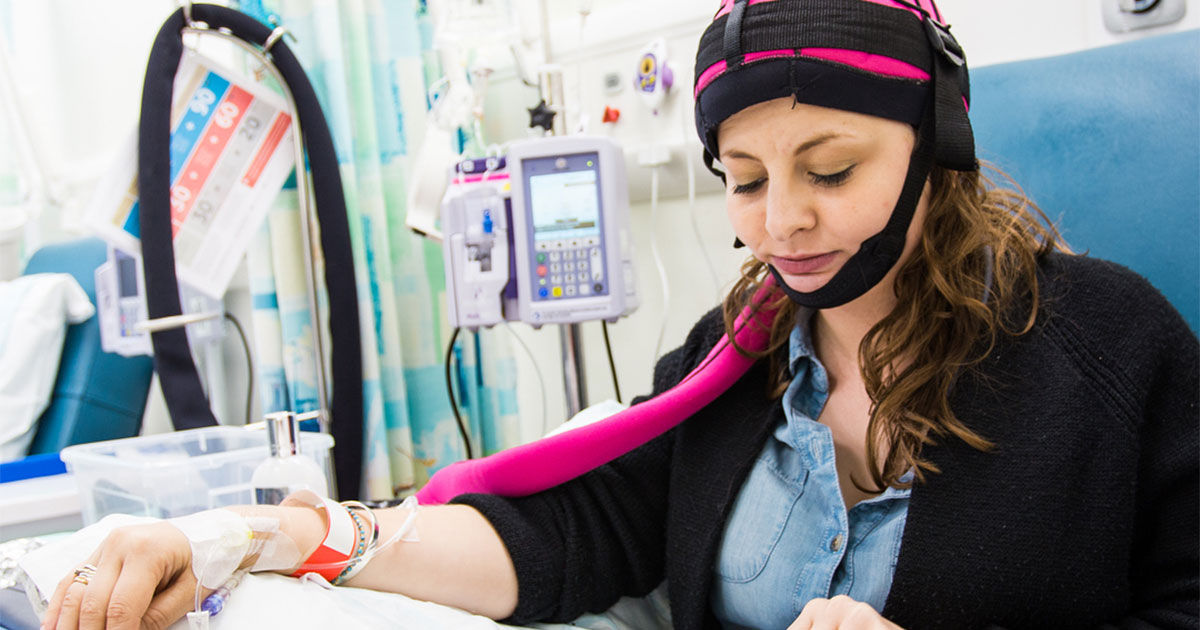A cancer diagnosis comes with an assortment of emotions, ranging from anger to fear to everything in between. In the beginning, while processing treatment schedules, drug choices and other decisions, many women wonder: “Will I lose my hair?”
Hair loss and chemotherapy have traditionally gone hand in hand, making an already traumatic experience even more grim. And if you prefer to keep your privacy during treatment, hair loss makes that nearly impossible.
But fortunately, the medical community has made advancements in recent years that are giving some cancer patients hope of keeping their hair. Scalp cooling, or cold capping, has been successfully used in Canada and throughout Europe for decades, and is gaining popularity in the United States. Manual caps like Penguin Caps or Elasto-Gel caps have been available in the U.S. for more than 20 years, paving the way for the Food and Drug Administration to clear the first scalp-cooling machine system in 2015.
Unfortunately, this technology is not yet covered by insurance, and the cost is significant. But salon professionals understand just how important a woman’s hair is, which is why we’re partnering with HairToStay, an organization that helps cancer patients afford the cost of cold capping and supports them through their chemotherapy treatments.
View this post on Instagram
WHAT IS COLD CAPPING?
The science behind cold capping is relatively simple. At its most basic, cancer boils down to rapidly dividing cells, and chemotherapy targets those rapidly-dividing cells. Our hair follicles are cells with some of the quickest turnover in our bodies, so the chemo attacks those as well, hence why you have hair loss.
By cold capping, you’re literally icing your scalp, bringing the temperature of the follicles down enough to put them in a kind of hibernation state, and restricting the blood flow that would carry the chemotherapy drugs to the follicles during therapy. The treatments happen at the infusion center, during chemotherapy appointments, with a pre-cooling time to get the temperature down, and continued cooling throughout the infusions, as well as up to several hours afterward so the blood flow is restricted when the levels are the highest.
The drawback: Manual cold capping, which has been the main option the past 20 years, involves several caps, coolers, hundreds of pounds of dry ice, and switching the caps out every 30 minutes. Not a simple process, to say the least.
The good news: More and more cancer centers are providing automated cooling services in the U.S., streamlining the process and removing an added level of stress for the patient.
However, it’s still expensive. Depending on the patient, the price tag on scalp cooling can run into the thousands of dollars, and is not covered by most insurance plans, leaving many patients unable to afford this treatment. This is where HairToStay comes in. HairToStay is the first and only national nonprofit dedicated to helping patients with financial need get the scalp-cooling treatment.
View this post on Instagram
HOW YOU CAN HELP
You can donate directly to HairToStay at hairtostay.org, or participate in your salon’s fundraising efforts this month. HairToStay typically gives their recipients an average of $1,000 to subsidize their scalp-cooling treatments.
Kristin, a HairToStay recipient from San Francisco, describes the positive effect that the hair-saving treatment has had on her look—and her outlook. “I look in the mirror and I don’t see cancer. I still see me and I don’t look sick,” she says.
“I own my privacy. I get to go to work, the grocery store, my daughter’s school and have a romantic life while being treated just like everybody else. The grant I received from HairToStay has allowed me to make the best out of a situation that is far from ideal.”


